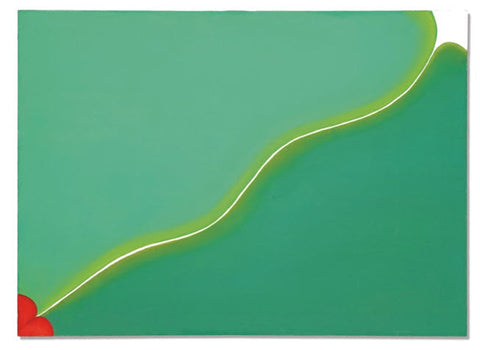
Women Artists of Lebanon: Huguette Caland
Huguette Caland lived and worked in Beirut, Paris, and for a short time, New York before settling in Los Angeles. Caland was relatively unknown despite the fact that she regularly showed her work. In LA, she had many remarkable friends and was known on the art scene. She invited many artists, poets, and thinkers to her home in Venice, CA, including Ed Moses, Billy Al Bengston, Ken Price, and Nancy Rubins.
Through her painting, Caland explored the female body, eroticism, and her own desires. He work is considered to be, according to the Hammer Museum: “joyously defiant output of an artist whose tendency was to be provocative through beauty and an engagement with otherwise taboo themes.” She talked about the “poetics of line,” which she used in her large scale paintings.
For an exhibition at the Arts Club of Chicago, curators Hannah Feldman, Keith L. and Katherine Sachs Associate Professor of Contemporary Art, University of Pennsylvania wrote this exhibition introduces the languages—sometimes joyful and sometimes pain-ridden—she cultivated in shape and color to speak of her experience alongside those of other bodies.” And “The work is contextualized in relationship to debates about gender and sexual norms in both France and Lebanon during the time. It concludes with a more recent painting from the artist’s late series of tapestry-like paintings, which bring her interest in the body and its surroundings to full force through a painterly idiom that borrows from the techniques and cultures of tatreez, or Palestinian embroidery.”

